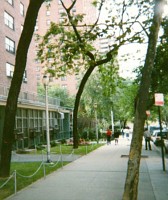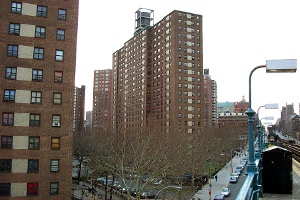Public Housing
Public housing as initially conceived was intended to eradicate slums and provide better dwellings for low-rent families, defined as those for which the private sector did not build decent new housing. The New York City Housing Authority, the first such local authority in the United States, in 1936 completed the First Houses on the Lower East Side, home to some of the country's worst slums at the turn of the century. The boom in the construction of public housing occurred after the second world war, with a special emphasis on high-rise designs that could house large numbers of people and were easy to construct. The demand for housing among WWII veterans reinforced the city's tendency to build housing for the poor in industrial and waterfront locations, while middle-income projects in more convenient locations were sanctioned by the federal urban renewal law of 1949.
As constructions waned in the 1960s, different forms of housing followed by the principle of "scatter-site" planning, which provided for small high-rise and low-rise projects, compatible with local neighborhood conditions that were fit into existing residential blocks to minimize the displacement of population. One such example is the Stephen Wise Towers on 91st street between Broadway and Amsterdam...contrasted with the General Grant Houses further north at 125th Street.
The presence of trees and playing children outside often belies the severe problems that exist on the insides of these buildings. Yet, while these sites scattered around the neighborhood are havens for illicit drug sales and crime, they do not achieve the critical mass of violence present in the large high-rise projects of Brooklyn's Red Hook or Cabrini Green on the south side of Chicago.

